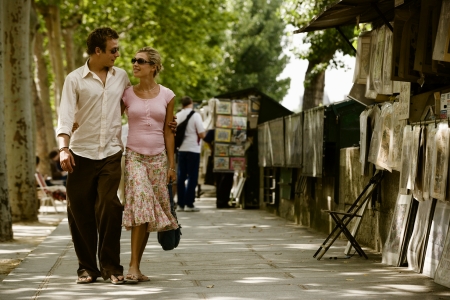Article
Eat, Drink and Be Merry in Tenerife
Published: Wed 22 Aug 2012 at 15:46
Updated: Wed 22 Aug 2012 at 15:49

It has to be said that knockout food and wine have never been considered highlights of a visit to Tenerife, a popular Jet2.com destination. Now though, more visitors are beginning to realise that there is much more to this Canary Island than sun, sea, sand and the odd volcano.
For starters, consider the rich, sweet Malmsey wine referred to as ‘Canary’ in Elizabethan England. In those days, this robust, fortified drink produced in Tenerife since the 15th century flowed from crystal decanters in the households of the movers and shakers of the day. Shakespeare famously had the Duke of Clarence drowned in a barrel of the stuff in Richard III and by the late 17th century the English had acquired such ataste for it that it elicited paeans of praise from the chronicler of Charles II. But it’s not all history.
These days, there’s a vibrant optimism about Tenerife’s wines, which until quite recently were all but ignored by most. In the past 20 years, wine has re-established itself with the planting of new vines, which normally grow between 50m and 1600m above sea level. The combination of unique local grape varieties, rich volcanic soil and the mild climate tempered by moisture-laden Atlantic trade winds makes a great basis for distinctive, rounded wines. Today, over 100 vineyards operate on the island with five designations of origin controlling the production.
Wine Trails
If you fancy a day away from the beach and hire a car, there is an officially recognized wine route in the Tacoronte area which provides opportunities to visit vineyards and sample their produce. Here you can also enjoy a range of leisure activities including walking trails, popular festivities, markets and culinary workshops. One stop on the trail is Bodegas Monje, a winery dating back to 1750 located in the north of the island. These days red wine is still produced here by combining traditional methods in harmony with modern viticultural techniques. Besides wine tasting, visitors can sample authentic Canarian dishes too.
Another winery worth a visit is Parque Frontos, on the old main road near Chimiche, within easy reach of Los Cristianos and other resorts. This innovative place is home to the Frontoslabel wine. Visitors can take a guided tour of the park to see how the wine is made, visit the warehouse and sample the product. There is a children’s playground on site as well as an award-winning restaurant so a day out there will make everyone happy.
Wines – White
Tenerife's white wines were originally introduced by the conquistadors. Nowadays, the island’s three varieties of white wine are dry, semidry and cask wine. These come mainly from a grape called Listán Blanca mixed with a small number of Malvasia and Gual grapes. This gives the wines a fruity aroma, often with a hint of aniseed, particularly in the full-bodied dry whites which are tickety-boo and perfect to drink in the hot Tenerife sun. The semi-dry is smooth with a good balance between sweet and acid, while the cask white has a fruity taste subtly combined with a hint of oak. All of them taste of the sun – supple and fresh on the palate.
...and Red
Red wine production in Tenerife was given a much needed boost after the initial success of the island's whites and has since achieved well-deserved recognition. Among these are the eminently drinkable, dry full-bodied ‘Traditional’, which gives off aromas of candied fruits, and the brave, punchy Maceration red, notable for its hint of wood aftertaste. Crianza Red has a vanilla and fruity aroma while Reserve Red is characterised by its complex toasty, tobacco and vanilla finish, long and complex on the tongue. So popular is all this wine locally that not much finds its way overseas, so best drink it while you’re on the island!
Food Glorious Food
If you make the effort to look beyond the often ordinary fare and pizza and burgers of many resort restaurants you can find fresh, simple and original Tenerife gastronomy. The fertile soil and warm, frost-free climate mean you can grow just about anything here and of course the surrounding seas teem with fish.
Specialities include sweet black pudding, hearty meat casseroles and the freshest of bright-eyed briny bounty: sardines, wahoo, cuttlefish, octopus, sea bass and shellfish galore, all with flavour in surround sound. Herbs that smell of sunny hillsides are added to as many local dishes as possible to yield flavour-packed meals with an exotic touch – particularly popular are saffron, oregano, basil, thyme and bay leaf.
‘Papas arrugadas’ are a delicacy unique to the Canary Islands. These small wrinkly potatoes cooked in heavily salted water with their skins on are usually served with a hearty spicy ‘mojo’ sauce. Originally from the Andes, these miniature potatoes are also known as ‘papas negras’ (black potatoes) or ‘papas bonitas’ (pretty potatoes) and first arrived in Tenerife in the 16th Century.
Nowadays the island is Europe’s largest producer of ancient-variety potatoes.
Green, orange or red Mojo sauces are ubiquitous in Tenerife and an important part of the island’s culture. So ubiquitous, in fact, that you wonder what they did to ginger up their food before the sauce was dreamed up. There are even popular songs dedicated to it! Green mojo, with an oil and vinegar base and the addition of coriander and parsley, typically complements fish dishes, while red and orange mojos, made with the same base and spiced up with pepper and red chillies, add fire and zest to blander dishes like potatoes, meats and certain fish.
Tomatoes, peppers and all kinds of salad vegetables are abundant and local bananas burst with flavour. Small, sweet and fruity fragrant they are often cooked in dishes savoury as well as sweet. Generally speaking, Canarians have a penchant for sweet things, particularly 'bienmesabe' which means literally ‘it tastes good’. This sweet syrup is a concoction of ground almonds, sugar, egg yolks, cinnamon, grated lemon rind, honey, rum or sometimes a dash of sweet wine and is usually incorporated into desserts.
Another popular sweet dish is the childishly winning, rich, creamy 'frangollo' – a cheerful, everyday-type concoction made from milk, eggs, plenty of dried fruit and gofio. Ah, gofio! Its importance in Tenerife cuisine is almost mythic and meat and fish stews may be thickened with this ground cereal, a mixture of toasted wheat, maize and barley. This is the only food still eaten with relish today which has survived from the native islanders. Originally gofio was barley based with the addition of roots and dried fruits. The ingredients were ground using a hand mill of two rough, circular stones that turned one on top of the other.
Nowadays gofio is eaten with milk as a breakfast cereal or mixed with ingredients like oil, water, bananas or dried fruit and honey and eaten as an accompaniment to other meals. It is also an essential part of dishes like ‘puchero canario’ (Canarian stew) or fish casserole.
Top-notch cheeses from the mild-mannered to the riotously ripe are produced on Tenerife. One of the most popular, the light, pleasantflavoured ‘fresco’ (fresh), with just a hint of salt and an enticing aroma of fresh milk, is eaten when only a few days old. Other cheeses are smoked with special woods or almond shells to give them a unique character and longer shelflife.
On menus of local restaurants you will often see ‘queso asado’ (fried cheese) or ‘queso a la plancha’ (grilled cheese), usually accompanied by a mojo sauce.
So there you have it. Not only is Tenerife a fabulous, easy to reach holiday destination with a host of exciting things to see and do, this island’s food and drink is also worth taking time to discover.
Related articles

JetAway – Have the Inbetweeners finally grown up?
Wed 09 Jul 2014 | Where2 Magazine, Announcements

A Weekend in Paris
Wed 22 Aug 2012 | Where2 Magazine



